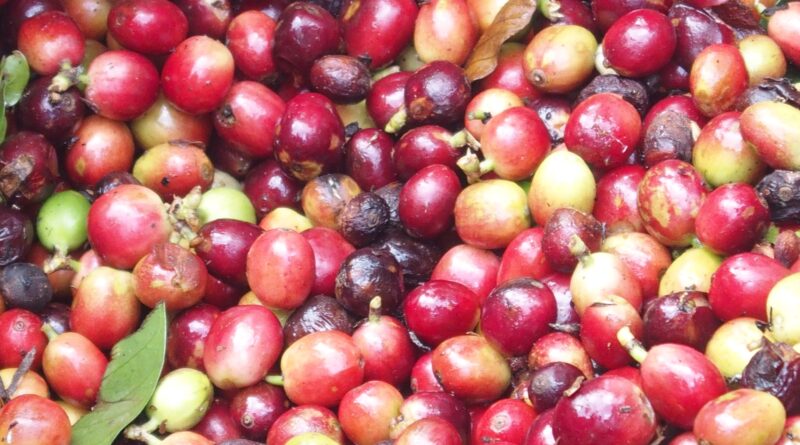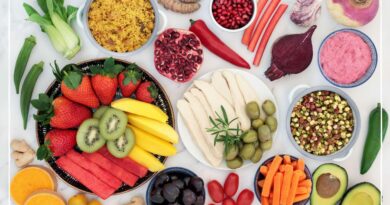How Coffee Beans are Made
Coffee beans are made from coffee cherries. Coffee cherries grow on coffee trees and are handpicked when they are ripe. The coffee cherries are then hulled to remove the outer fleshy part of the fruit, leaving the coffee bean inside.
The beans are then washed and dried before being roasted. Roasting gives the beans their characteristic dark color and flavor.
How Millions Of Pounds Of Coffee Are Processed At Hawaiian Coffee Farms | Big Business
Coffee beans are the seeds of the coffee plant, which is a member of the genus Coffea. The coffee plant is a woody perennial that can grow to 10 meters (33 feet) tall when unpruned. The leaves are dark green and glossy, with a serrated margin.
The flowers are white, with an intensely sweet fragrance. The fruit of the coffee plant is called a coffee cherry and contains two seeds, or beans.
When ripe, the coffee cherry turns red or yellow, depending on the variety of coffee plant.
Coffee cherries are hand-picked and then placed in water tanks where they undergo a process called wet pulping. During wet pulping, the outer layer of flesh is removed from the cherry using rotating blades. This process separates most of the mucilage from around each bean.
The beans are then transferred to fermentation tanks where they remain for 12 to 36 hours. This allows enzymes present in the mucilage to break down complex carbohydrates into simpler sugars. After fermentation, the beans are washed and dried before being hulled (have their outer layers removed).
Once hulled, light-colored inner parchment layer remains surrounding each bean. At this stage, green coffee beans have completed their journey from seed to cup!
How is Coffee Made Step by Step
How is Coffee Made Step by Step?
Coffee is one of the most popular drinks in the world, enjoyed by millions every day. But how is coffee made?
Read on to find out!
The first step in making coffee is to roast the coffee beans. This can be done in a variety of ways, but most commonly, commercial roasters use large drum roasters.
The beans are heated until they reach temperatures of around 400 degrees Fahrenheit (200 degrees Celsius). During roasting, the beans undergo a chemical process called pyrolysis, which gives them their characteristic flavor and aroma.
After roasting, the beans need to be ground up into a fine powder.
This can be done using a simple hand-operated grinder or a more sophisticated electric grinder. The finer the grind, the better the flavor of the coffee will be.
Once the beans are ground, it’s time to brew!
There are many different ways to brew coffee, but most people either use an automatic drip coffeemaker or French press. To make drip coffee, simply add ground coffee and water to your coffeemaker and let it do its thing! For French press, add grounds and water to your press pot and let steep for 4 minutes before pressing down on the plunger to filter out the grounds.
Enjoy your freshly brewed cup of coffee!
Coffee Bean Harvesting And Processing
Coffee bean harvesting and processing is a complex process that involves many different steps. The coffee beans are first harvested from the coffee plant. Once they are harvested, they are then processed to remove the outer layer of the bean.
After the processing is complete, the coffee beans are roasted to bring out their flavor. Finally, the beans are ground up and brewed to create a delicious cup of coffee.
The coffee bean harvesting and processing process begins with the coffee plant being hand-picked.
The coffee cherries are then sorted by ripeness and color. Once they are sorted, the coffee cherries go through a machine that removes the outer layer of skin and pulp from the cherry. This process is known as de-pulping.
After de-pulping, the coffee beans go through another sorting process where they are sorted by size and weight. Once they have been properly sorted, the beans go through a washing process where any remaining fruit or pulp is removed from them.
Once the washing process is complete, thebeans go through a drying process where they are placed on racks in warehouses to dry for several weeks.
After they have sufficiently dried,the beansare then hulled, which removes the final layers of skin and parchment from around them.
After hulling,thecoffee beansare ready to be roasted. Roasting brings outthe rich flavor ofthebeanand helps to develop its aroma profile.
Depending on how dark or light you want your roastto be will determine how long you roastthebeansfor; generally speaking, darker roasts take longer than lighter roasts do . once roasted , it’s time to grindandbrew!
Is Coffee Made from Poop
If you’re a coffee lover, you might be interested to know that your beloved beverage is made from poop. That’s right – coffee is made from the beans of a fruit that grows on trees, and these beans are actually the seeds of the fruit. The coffee tree produces a fruit that looks like a cherry, and inside each of these fruits there are two beans.
Once the cherries are harvested, the beans are removed and then roasted to create coffee.
So where does the poop come in? Well, it turns out that coffee trees thrive in areas where there is plenty of animal manure.
In fact, many farmers will actually use cow or other animal manure as fertilizer for their coffee trees. This provides nutrients that help the trees to grow and produce more fruit (and more coffee beans).
So next time you enjoy a cup of joe, just remember – it’s made from poop!
Production Process of Coffee Shop
Assuming you would like a blog post discussing the production process of coffee in a coffee shop:
Coffee is one of the most popular drinks in the world and has been around for centuries. The production process of coffee starts with the bean.
Coffee beans are grown in countries all around the world including Brazil, Colombia, Ethiopia, and India. Once the beans are harvested, they are roasted to bring out their flavor. Roasting can be done light, medium, or dark depending on the desired flavor profile.
After roasting, the beans are ground up and brewed with hot water to create coffee. Depending on how it is brewed, coffee can be weak or strong, have more or less caffeine, and be enjoyed black or with milk and sugar added.
There are many different ways to make coffee but some of the most popular methods include drip brewing, espresso brewing, and French press brewing.
Drip brewing is when hot water is poured over ground up coffee beans that are placed in a filter inside a carafe or mug. The water drips through the grounds extracting all of the flavors and oils before ending up in your cup. Espresso brewing uses pressure to force hot water through very finely ground coffee beans yielding a small amount of very strong coffee concentrate.
Espresso is often used as a base for other drinks like cappuccinos and lattes because it packs such a flavorful punch. French press brewing involves placing coarsely ground beans at the bottom of a glass cylinder along with hot water. A plunger is then used to push down on the grounds trapping them at the bottom while allowing only brewed coffee to pour into your cup above.
Coffee Harvesting
It’s that time of year again! The coffee harvest is upon us, and we couldn’t be more excited. This is the time when all of the hard work that has gone into growing and caring for our coffee trees finally pays off.
The coffee harvest typically takes place between October and February, depending on the region. During this time, workers carefully hand-pick each ripe coffee cherry from the tree. It is a painstaking process, but it ensures that only the best cherries are selected for processing.
Once the cherries have been picked, they are sorted and then transported to a mill where they will be hulled and dried. Hulling is the process of removing the outer layer of skin from the cherry, while drying reduces its moisture content so that it can be safely stored before roasting.
Afterwards, the dried beans are sorted according to size and quality, then shipped off to their final destination: your local café or home kitchen!
We hope you enjoy your next cup of coffee knowing that it was lovingly grown and harvested with care.
How is Coffee Harvested
Coffee is harvested in one of two ways: the pick-and-drop method or the strip method. In the pick-and-drop method, workers individually handpick only the ripe coffee cherries and place them into baskets. In the strip method, workers use a mechanical stripper to harvest all of the coffee cherries, ripe or unripe, from a tree at once.
The majority of coffee is harvested using the strip method because it is faster and less labor intensive. However, some specialty coffees are still picked by hand to ensure that only ripe cherries are selected. Once coffee cherries are harvested, they must be processed quickly to prevent spoiling.
Process of Making Coffee in Coffee Shop
How do coffee shops make their coffee? The process may vary slightly from place to place, but there are some common steps. Here’s a look at how your cup of joe is made:
1. The beans are roasted. This step brings out the flavor and aroma of the coffee. Roasting also removes the bean’s natural moisture so that it will grind more evenly.
2. The beans are ground. This step releases even more flavor and aroma. Depending on the type of coffee being made, the grind can be coarse or fine.
3. Hot water is added to the grounds and permitted to steep for a certain amount of time. This step is called brewing and it extracts all of the flavors and aromas from the grounds into the water.
4. The brewed coffee is then strained through a filter to remove any solids (grounds).
What’s left is a flavorful liquid that we know as coffee!
Coffee Production Process Pdf
Coffee production is the industrial process of converting coffee beans into roasted coffee. The coffee production process involves four main steps: growing, harvesting, roasting and packaging.
Coffee production begins with the planting of coffee trees.
Coffee trees take approximately three to five years to mature and produce their first crop. Once the coffee trees have produced their first crop, they will continue to produce fruit for 20-30 years.
The next step in coffee production is harvesting the coffee cherries.
Coffee cherries can be harvested by hand or by machine. The method of harvest will depend on the size of the farm and the availability of labor.
After the coffee cherries have been harvested, they need to be processed before they can be roasted.
The processing step removes the cherry pulp from around the bean. The beans are then dried until they contain about 10% moisture content.
Once the beans are processed and dried, they are ready to be roasted!
Roasting is a critical step in developing flavor profiles in coffee beans. Beans can be roasted light, medium or dark, depending on the desired flavor profile.

Credit: www.verenastreet.com
What is Coffee Beans Made Out Of?
Coffee beans are actually the seeds of coffee cherries. The coffee plant is a flowering shrub that produces these red or purple fruits. Once the fruit is ripe, it’s hand-picked and the beans are extracted and dried.
The coffee bean itself is encased in a hard shell called the endocarp. Underneath the endocarp is where you’ll find the actual seed, which is what gets roasted to make coffee. This seed is typically oval or round in shape and very dark in color.
So, to sum up, coffee beans are made out of the seeds of coffee plants (coffee cherries). These seeds are encased in a hard shell (endocarp) and underneath that is where you’ll find the actual seed that gets roasted to make our beloved cup of joe!
Are Coffee Beans Real Beans?
Coffee beans are real beans, but they’re not the kind of beans you might be thinking of. Coffee beans are actually the seeds of coffee cherries. And while we often refer to them as “beans,” they’re really more similar to peanuts in terms of their nutritional composition.
Coffee beans are relatively high in fat, with a typical serving containing around 2 grams of fat. But most of this is healthy unsaturated fat. They’re also a good source of fiber and contain some essential vitamins and minerals, including magnesium, potassium, and niacin.
While coffee beans may not be the same as other types of beans, they’re still a healthy and flavorful addition to your diet. So go ahead and enjoy that cup of joe!
Does Coffee Plant Actually Grow Coffee?
The coffee plant is a flowering plant that produces the coffee bean. The coffee bean is actually the seed of the coffee plant. The coffee plant grows in tropical regions around the world and can grow to be up to 30 feet tall.
The coffee bean is used to make brewed coffee and is also used in many other food and beverage products.
Conclusion
Coffee beans are the seeds of a coffee plant. The coffee plant is a member of the genus Coffea, which contains about 100 species. The two most common species are Coffea arabica and Coffea canephora.
Coffee plants grow in tropical regions around the world, such as Central America, South America, and Africa.
The coffee plant produces fruit called coffee cherries. Inside each cherry are two small beans.
Once the cherries are harvested, the beans are removed and placed in large vats where they undergo a process called fermentation. During fermentation, enzymes break down carbohydrates in the beans, which produces carbon dioxide and alcohol. After fermentation, the beans are dried and then roasted at high temperatures to produce the familiar brown color of coffee beans.




